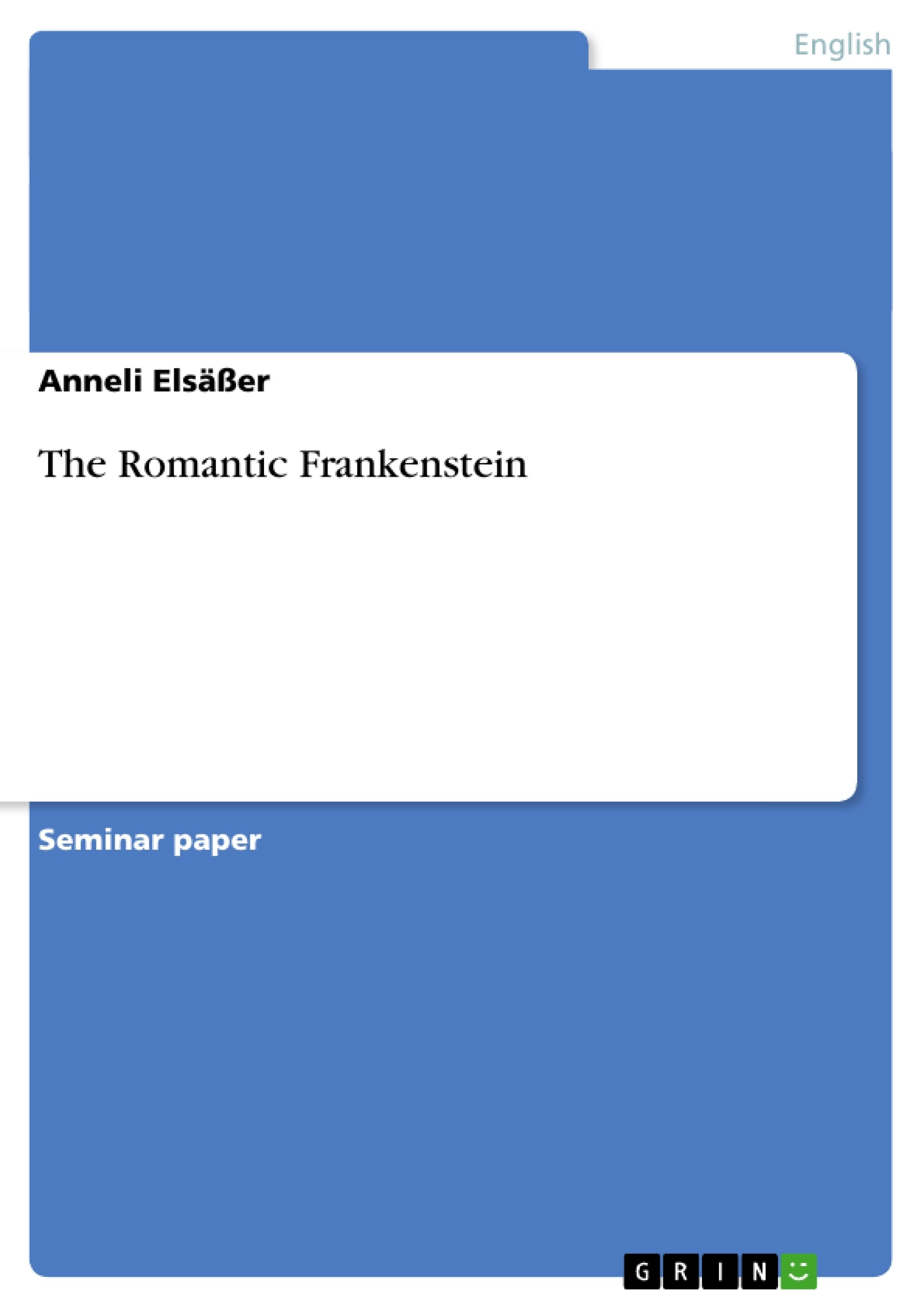Mary Wollenstonecraft Shelley is one of the major representatives of the Romanticism movement of the late eighteenth and early nineteenth century. In 1816, when Shelley wrote her first and most popular work "Frankenstein or the Modern Prometheus", the Industrial Revolution had just begun. New inventions were made and the world as it was known changed rapidly. In her novel Shelley takes on the idea of the damage this quick and unfamiliar progress could do. Victor Frankenstein, the main character of the novel, attempts to triumph over nature in that he tries to bring something inanimate to life. He successfully creates a living being but the creature turns against his creator and destroys Frankenstein’s life. The creature has no name and it is unclear whether it should be seen as a monster or as a human being. In "Frankenstein" Mary Shelley contrasts the beauty and serenity of nature to the destroying powers that can be released when meddling with scientific progress. Her themes fit well into the ideas of the Romantic poets: she understands the importance of the state of childhood and also focuses on nature as a counterpart to the progress and destruction of Industrialism and progress. Like her contemporaries she tries to further the idea of going back to nature and a childlike state of imagination instead of destroying lives by opposing the course of nature. This paper discusses how nature, childhood, knowledge, and progress work together and how Shelley explores each of them in her novel.
Table of Contents
- Introduction
- Nature
- The soothing spirit of nature
- The dark side of nature
- Childhood
- Knowledge
- The pursuit of knowledge
- The monster's search for knowledge
- Scientific Progress
- The Industrial Revolution
- The scientist as God
- Responsibility
- Relevance for the twentieth century
- Conclusion
Objectives and Key Themes
This paper aims to analyze Mary Shelley's Frankenstein as a Romantic work that explores the dangers of scientific progress and the consequences of interfering with the natural order. The paper investigates how Shelley uses nature, childhood, knowledge, and progress to convey her message.
- The contrast between the beauty and serenity of nature and the destructive potential of scientific progress
- The theme of childhood innocence and the loss of innocence through the pursuit of knowledge
- The impact of the Industrial Revolution on society and the natural world
- The concept of responsibility and the consequences of unchecked ambition
- The exploration of the monstrous, both in the form of the creature and the destructive forces unleashed by scientific progress
Chapter Summaries
The introduction sets the stage for the analysis by situating Frankenstein within the context of the Romantic movement and the Industrial Revolution. The paper highlights the novel's central themes, including the contrast between nature and scientific progress, the role of childhood, and the dangers of unchecked ambition.
The section on nature examines the dualistic nature of nature in Shelley's novel. On the one hand, nature provides solace and beauty for both Frankenstein and the monster, serving as a source of renewal and inspiration. On the other hand, nature is depicted as having a dark and destructive side, foreshadowing tragic events and revealing the consequences of tampering with the natural order. The chapter uses examples from the novel to illustrate how Shelley utilizes nature to create a sense of both wonder and dread.
The chapter on knowledge explores the pursuit of knowledge in the context of Frankenstein. It examines how both Victor Frankenstein and the monster are driven by a thirst for knowledge, but their pursuit leads them down a path of destruction and despair. The chapter also explores the implications of knowledge for the individual and for society as a whole, highlighting the dangers of unchecked ambition and the importance of responsibility in the pursuit of knowledge.
The chapter on scientific progress examines the Industrial Revolution as a catalyst for both progress and destruction. Shelley uses Frankenstein's creation of the monster as an allegory for the potential dangers of unchecked technological advancement. The chapter explores the themes of the scientist as God, the responsibilities inherent in scientific progress, and the potential consequences of interfering with the natural order.
Keywords
The primary keywords of this paper include: Romanticism, Frankenstein, Mary Shelley, nature, childhood, knowledge, scientific progress, Industrial Revolution, responsibility, the monstrous, and the dangers of unchecked ambition. These keywords encapsulate the central themes and ideas explored in the analysis of Shelley's novel.
- Quote paper
- Anneli Elsäßer (Author), 2006, The Romantic Frankenstein, Munich, GRIN Verlag, https://www.grin.com/document/70858




